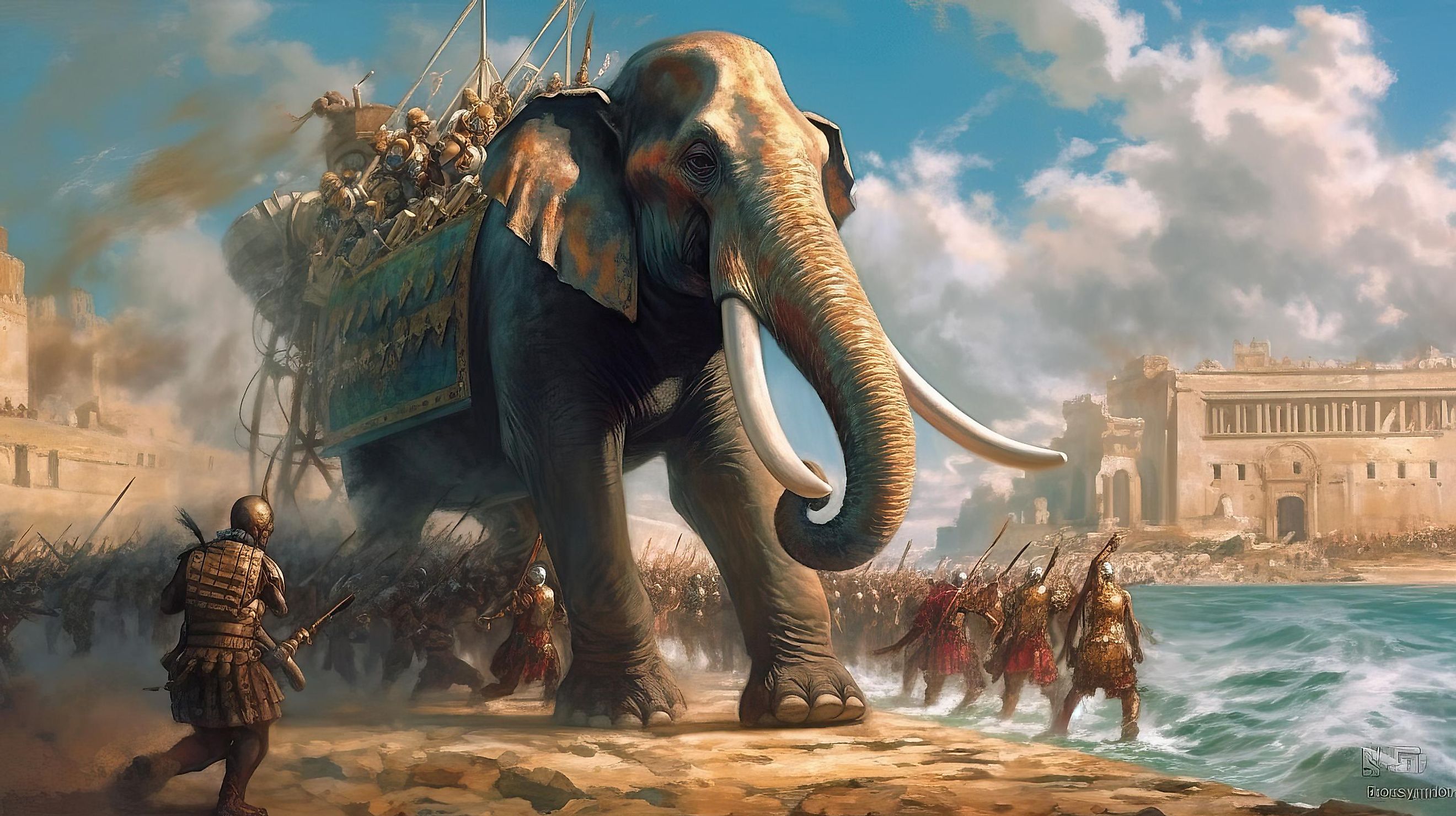
9 Exceptional Weapons of the Ancient World
The Ancient World was no stranger to war and conquest. Countless nations, empires, kingdoms, and tribes waged war against one another on a near-constant basis. No matter the reason, war and conflict were a near inescapable constant that defined the era. It was during the height of Antiquity that the first armies developed, and warfare was waged on a level that was once thought impossible. Whether in China or Rome, every community across the globe built up its own army and equipped its soldiers with the most effective and deadly weapons available to them at the time.
Gladius (Rome)
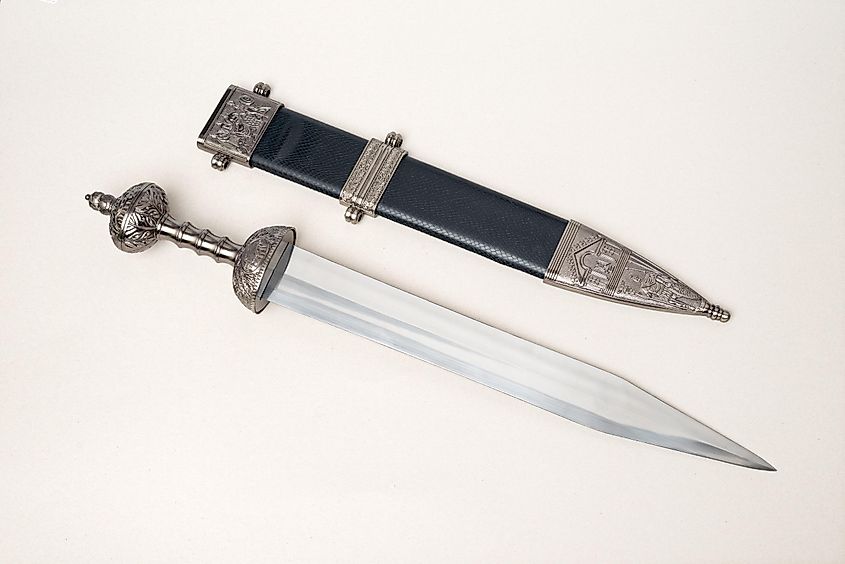
This short sword was the backbone of the Roman military. It is not entirely clear when the Romans adopted this sword for common use, but it can be safely assumed that the gladius was an integral part of the Roman war machine as far back as the Republic's early years.
The gladius was best used in the tightly packed infantry formations in which the Roman legions were famous for fighting. Once the legionaries came into combat with their enemies, they used their large shield to block all attacks aimed at the body and counter using the gladius. The Roman legions would never look to try and win a battle quickly but rather slowly grind down their opponents using this exhausting and frustrating form of fighting.
Pilum (Rome)
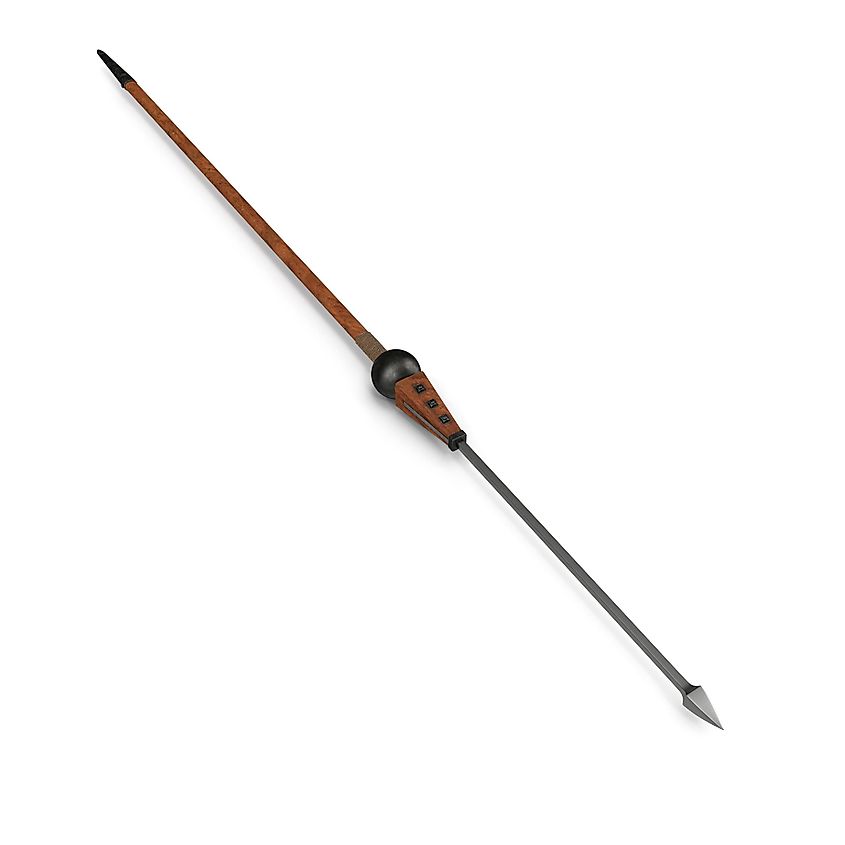
The pilum was the standard Roman javelin that was handed out to each of its legionaries. Much like the gladius, it was incredibly simple, yet it had a devasting effect on the battlefield. While javelins are one of the oldest weapons known to man, the pilum was an exception due to its unique and ingenious design. The wooden shaft of the pilum only consisted of about half of the weapon's two-meter-long length. The other half consisted of a long iron shaft with a barbed tip on the end.
The pilum was not expressly designed to kill but to severely hinder enemy infantry. Once the legionnaires were in range, they would throw their pilum into the enemy ranks. As planned, many of these pilum would be caught in their opponent's shields. However, due to the barbed tip of the pilum, removing the pilum from a shield was next to impossible. This tactic left the enemy combatant in a precarious situation, either drop the shield and leave yourself open to attack or continue to fight using the shield but at the disadvantage of doing so with a much less effective and unwieldy shield.
Chu-Ko-Nu (China)
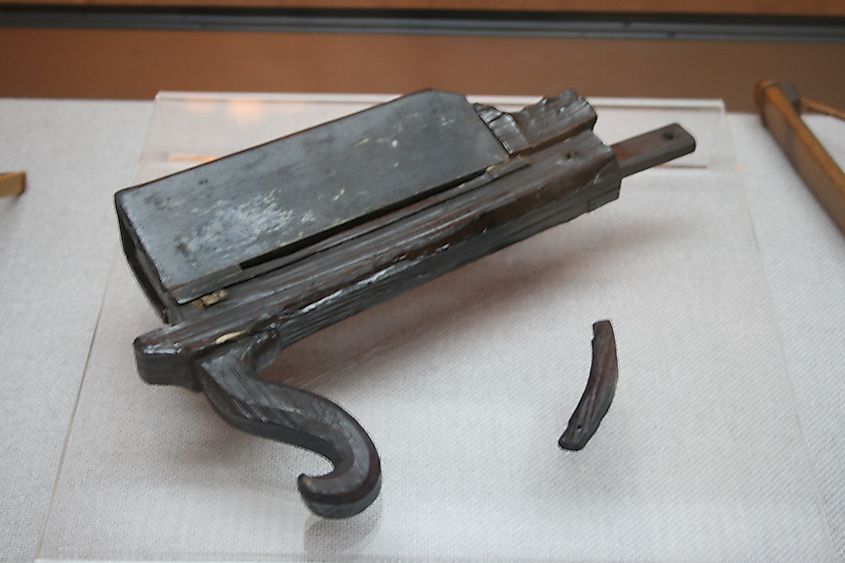
First invented sometime in the 4th century BC, the Chu-Ko-Nu was an ancient repeating crossbow from the Han Dynasty in China. Being able to hold as many as 10-15 bolts at a time, a small group of Chinese crossbowmen could have kept up a steady stream of fire without reloading. A slow fire rate was a major drawback of traditional crossbows. However, the Chu-Ko-Hu had no such drawback. The way this weapon was fired was also much different from what would have been found in Europe.
The Chu-Ko-Nu was not shot from the traditional shouldered stance but rather from the hip. This technique did lead to some issues with accuracy, but the sheer rate of fire made up for it.
Falx (Dacia)
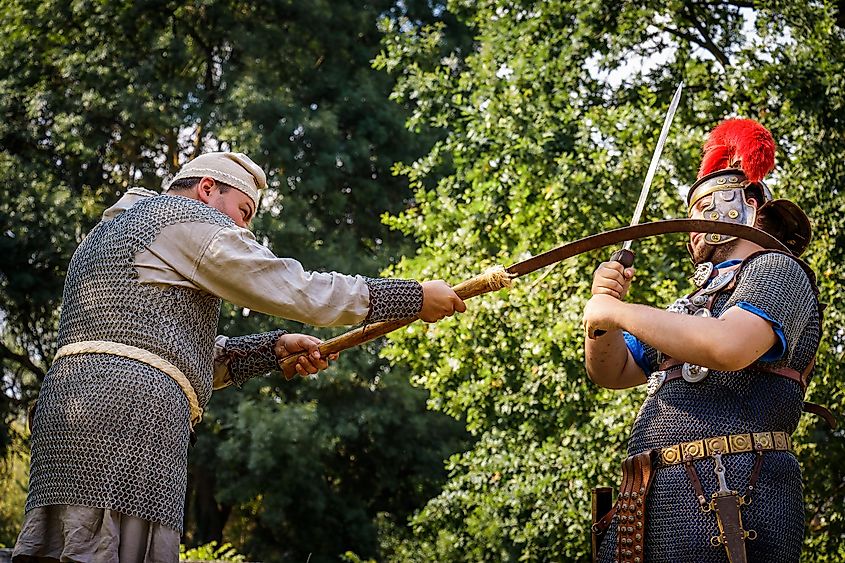
The falx was an enormous one-handed or two-handed sword that the Dacians primarily used during the Roman Empire. The Dacians inhabited much of modern-day Romania and were considered some of the fiercest fighters in the world. The falx was a long sword that curved outward toward the enemy. This gave the weapon the distinct look of an animal's talon or claws. The falx was famous for its ability to punch through the heavily armored legionnaires of the Roman Empire.
Despite fighting in little to no armor, the Dacians made up for this through the sheer shock and power behind a mass charge of falx-wielding warriors. Even at the height of their power, the Romans struggled to subdue the Dacians in many parts due to the devastation caused by this weapon.
Chariot (Mesopotamia)
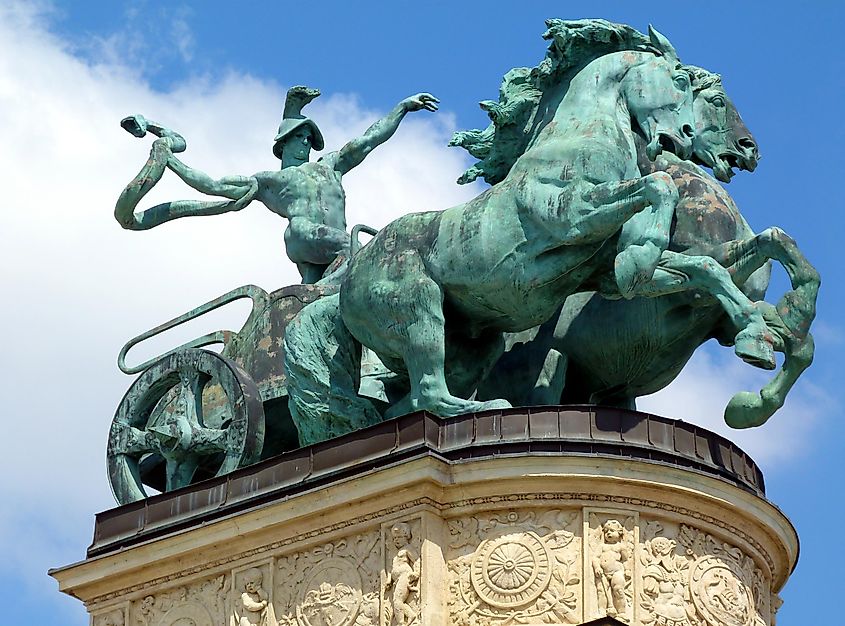
The horse-drawn chariot first began to appear as early as 3000 BC in what would have been modern-day Iraq and Syria. The chariot had many day-to-day uses, but its primary purpose and design was for the battlefield.
The chariot was quick to be adopted as far away as the British Isles but mainly saw use in the empire and kingdoms of the Middle East. Chariots served both as heavy shock units that could easily maneuver around the large infantry formation and set up devasting charges and were also used as mobile platforms for archers to harass the flanks of the enemy. There were even instances of chariots having blades attached to the sides of their wheel and then being driven into the ranks of an opposing army. As you can imagine, this must have been as terrifying as it was deadly.
Sarissa (Macedon)
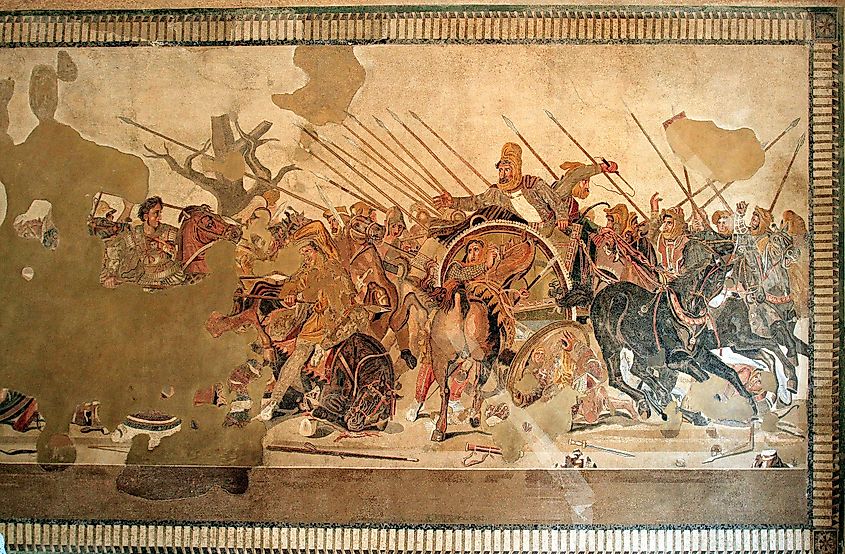
The sarissa was an incredibly long and hard-to-use pike made famous by Alexander the Great. While the weapon would have been worse than useless in single combat, the sarissa was almost unstoppable when deployed in mass amongst large blocks of infantry. The sarissa was a staggering 7.5 meters (25 ft) long. This gave the user an enormous advantage in combat. Most infantry soldiers at the time would have been armed with a simple spear and shield and had no hope of reaching the person holding the sarissa.
Alexander the Great used these large pike formations most effectively against the Persian Empire in the 3rd century BC. Arming most of his infantry with sarissas made winning a frontal infantry engagement against his army almost impossible. The results speak for themselves.
Recurve Bow (Central Asia)
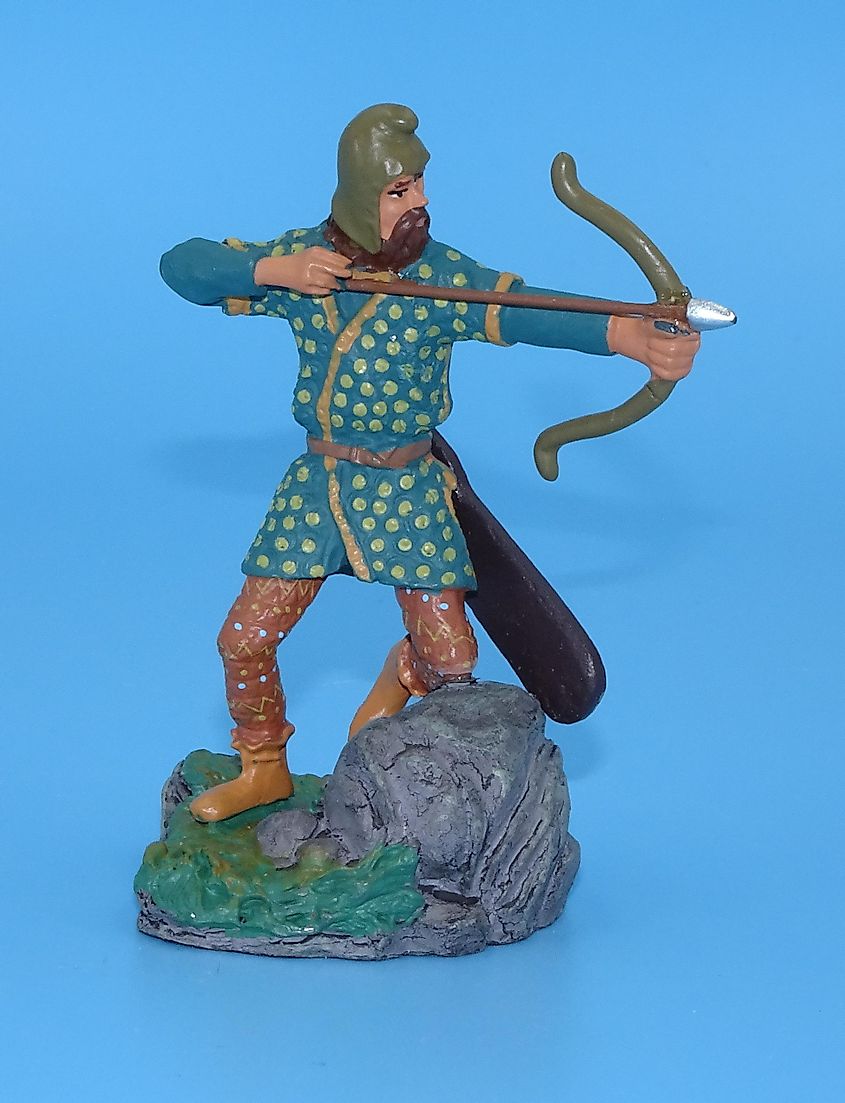
It is hard to say for sure who first invented the recurve bow. It saw use by all numbers of nomadic peoples who hailed from the steppes of Central Asia. The most famous users of this weapon from the Ancient World would have been the Huns. First arriving on the edge of the civilized world sometime in the middle of the 4th century AD, the Huns swept across most of Eastern and Central Europe and even threatened to reach Rome itself.
The Huns were famous for using their recurve bows to great effect. Typically, Hunnic cavalry would avoid hand-to-hand combat and preferred to shoot endless arrows into enemy troops from afar. The shape and curvature of their bows generated much more power and provided that much-needed stopping power to punch through the heavy armor of Roman legionnaires.
Khopesh (Egypt)
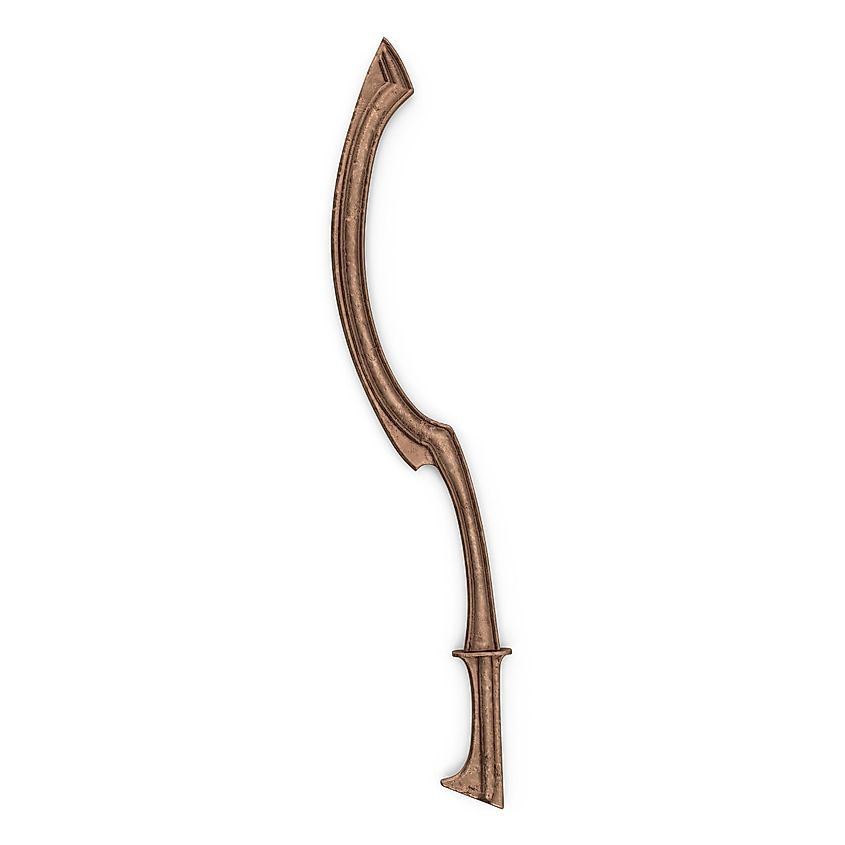
One of the more famous weapons of the Ancient World, the khopesh is one of the great symbols of Ancient Egypt and its military. While the Egyptian nobility widely used the chariot, it was the khopesh that would have been given to rank-and-file troops of the Egyptian army. Famous for its sickle-like shape, the khopesh's appeal goes far beyond its unique aesthetics. The khopesh was an unusually long sword for its time, reaching out to be around 2ft. This design gave Egyptian infantry a huge advantage against other troops who would have been using short spears and swords.
The khopesh was also exceptionally heavy, making it the perfect tool to hack through wooden shields and bronze and leather body armor. The adoption of the khopesh is what is often regarded as one of the leading reasons for the emergence of Egypt as an imperial power in the wake of the Bronze Age Collapse.
War Elephants
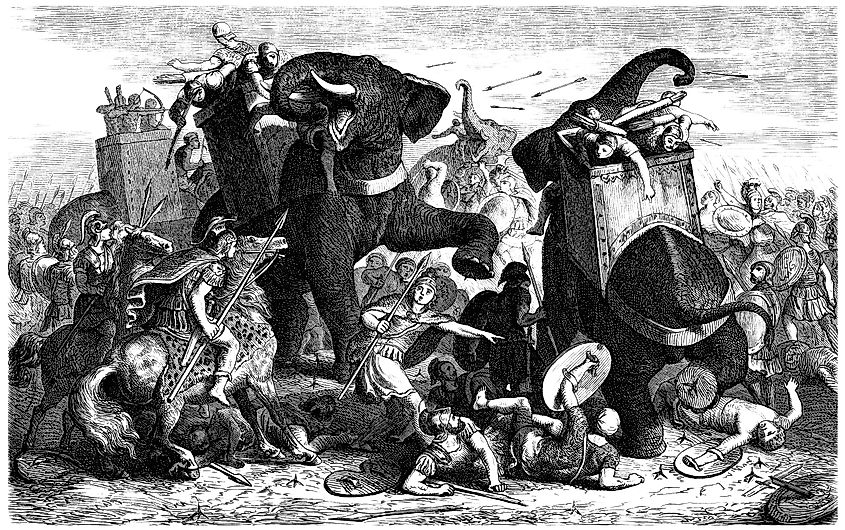
War elephants were surprisingly used all across the Ancient World. Nations from the Middle East, India, and North Africa all used war elephants at one time or another. While there is much debate among military historians on how effective the elephants were in combat, there is no doubt in the sheer terror and fear they caused in the ranks of the enemy army.
Perhaps the most famous instance of war elephants being used in combat was by the cunning Carthaginian general Hannibal Barca. Hannibal and his mercenary army made a daring invasion of Italy through the Swiss Alps. Many of his elephants died on the way, but some did see a few battles against the Romans.
It would be hard to imagine what it would have been like to face down an animal like an elephant in battle. Especially considering that the average Roman soldier would have had no conception of what an elephant was to begin with. It would have been like finding yourself in combat against some kind of creation from outer space.
The Ancient World and its militaries were in no short supply of fascinating weapons. No matter how big or small, each group across this enormous span of time had its unique way of fighting and its own weapons and armor style. Despite all of these civilizations being long gone, a part of them still lives on through the numerous weapons and other artifacts that remain with us today.











